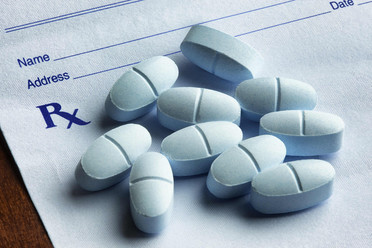|
Data from a 2019 National Survey on Drug Use and Health showed that 1.6 million individuals in the United States have opioid use disorder (OUD). There are three different approved medications for OUD (MOUD). Medications for opioid use disorder are significantly underused, and retention to medication-assisted treatment (MAT) is low, meaning not all individuals that enroll in the MAT will complete the treatment. An analysis of the National Survey on Drug Use and Health data found that illicit methamphetamine use prevalence more than doubled among people with OUD-related prescription from 2015 to 2017. Researchers conducted a systemic review of data from January 2000 to July 2020 that documented people with , and methamphetamine/amphetamine use to understand whether methamphetamine impacts the receipt of MOUD.
The studies generally found negative associations with opioid abstinence and methamphetamine/amphetamine during treatment among patients receiving methadone. Some of the negative associations found were polysubstance use and high discontinuation of treatments after 30 days. Methamphetamine/amphetamine use among OUD patients showed a possible correlation with lower receipt of MOUD, lower retention in MOUD, and lower abstinence during MOUD. need to be made to create more efficient MOUD care for patients that utilize methamphetamine/amphetamine and have a prescription OUD, but further research needs to be conducted to make improvements.
Although contingency management (CM) is one of the most effective behavioral interventions when combined with medication, its use is limited for opioid use disorder (OUD). CM is a behavioral therapy that provides patients with tangible motivational incentives for attaining pre-defined treatment goals. The National Institute on Drug Abuse funds Project MIMIC (Maximizing Implementation of Motivational Incentives in Clinics) to identify effective strategies for helping opioid treatment programs to include CM implementation. Project MIMIC has partnered with 30 community-based opioid treatment centers to implement CM.
Brown University will study the impact of CM implementation outcomes and patient outcomes to inform different OUD treatment centers how to implement effective interventions.
 Buprenorphine hydrochloride is a medication utilized for opioid use disorder (OUD) treatment and is also prescribed for chronic pain treatment. Clinicians are required to obtain a waiver and have a limited number of buprenorphine prescriptions available when utilizing it for OUD treatment; however, there is no need for a waiver when prescribed for pain management. The primary reason for this difference is policymakers’ concerns of buprenorphine misuse among individuals who already have an OUD.
Understanding the use and misuse of prescription opioids and the differences between buprenorphine misuse and other prescription opioid misuse can help address policymakers' concerns. National Survey on Drug Use and Health (NSDUH) collected survey data from January 2015 to December 2019 to address the mentioned concerns among others. In this survey study of 214,505 respondents, approximately three-fourths of adults that reported buprenorphine use did not misuse their prescribed buprenorphine in 2019. Adults who misused buprenorphine were more likely to report using prescription opioids without prescriptions than those who misused buprenorphine while having a prescribed opioid. Among adults with OUD within the past year, buprenorphine misuse was mainly associated with individuals ages 24 to 34. Among U.S. adults in 2019, an estimated 2.4 million used buprenorphine and an estimated 0.7 million misused buprenorphine in the past 12 months, leaving an estimated 1.7 million who used buprenorphine without misuse. Overall, the 2015 to 2019 data suggests that the prevalence of buprenorphine misuse showed a downward trend in 2019.
|